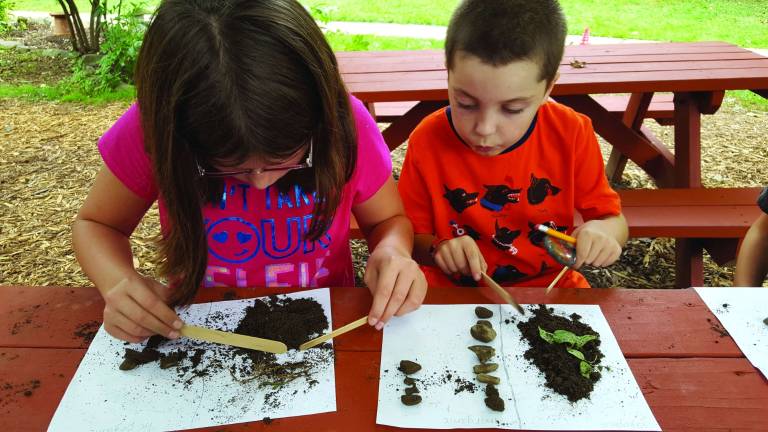A teacher’s ‘organic’ re-education

I chose the theme, “We Are What We Eat” for this year’s environmental topic at my school and you might say I’ve been hitting the books: devouring articles and videos, The Third Plate by Daniel Barber and The Omnivore’s Dilemma by Michael Pollan. I am finding out what I knew about soil and nutrition was just a root hair’s width of what I really need to know.
A little background: the word “humus” means of and from the Earth. Human, humility – same root. The problem is that humans decided to “elevate” their position from being “of the Earth,” losing our humility, to thinking of ourselves as so lofty and mighty that we forgot where we come from. With forgetting, we begin to fail, to exterminate ourselves and the rest of life on this glorious planet.
In The Third Plate, Barber points out that our food is so industrialized that the flavor is literally washed out of it. Flavor is directly, demonstrably related to nutritional content, he found. The healthier the soil in which a carrot grows, the more sugar that carrot will naturally contain.
As an aging adult, I have noticed that my food is less and less flavorful. I thought I was losing my sense of taste, but I really think it is more about the food itself. I thought I was eating a very healthy diet by buying organic vegetables, but I was buying industrial organic vegetables. These, too, are part of a monoculture like massive corn or soybean farms, just not polluted with pesticides. I had part of the story right, but not the most important part. In order to truly eat healthy food, I either have to grow it myself or find farms in farmer’s markets that have truly healthy soil with plenty of diversity.
You see, the diversity of crops that our grandparents had – the old farms that grew not only corn, but hay, apples, squash, peppers, pears and your typical farm animals – they had the right idea. The healthier soils that produced flavorful vegetables bursting with nutrition.
Diversity is the key in nature’s systems. Everything is connected, from the sun that feeds the plants to the animals that feed on them, to the soil that anchors and feeds them all. We must begin to understand this interconnectedness— then we can find solutions to many of the problems we face today.
We can take carbon out of the air and put it back into our soils where it belongs. We can offer carbon credits to farmers who farm properly, thereby increasing their profitability. We can compost all of our green scraps, even in our cities by having municipal composting. We can increase the health of our soils by adding healthy humus to it, and we can then grow more nutritious food that we will find we need less, not more of, to keep us well fed.
–Debra Smorto, Fields of Green Montessori, Vernon NJ